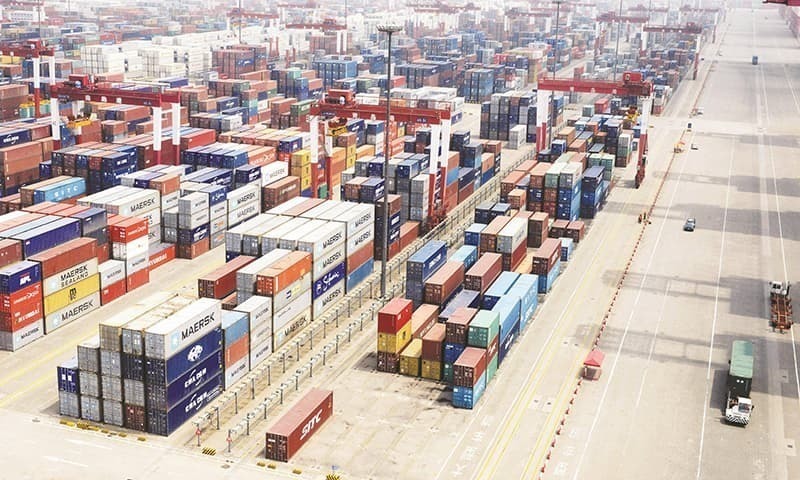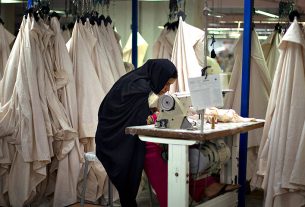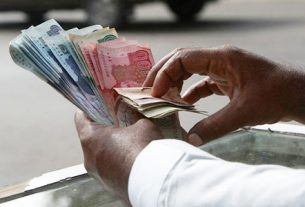PTI government’s regulatory approach for reducing foreign trade and current account deficits and for creating a balance of payments surpluses did succeed for a while, but these positive trends seem to be losing steam with sporadic signs of economic recovery. In its latest World Economic Outlook (WEO), the International Monetary Fund (IMF) estimates that Pakistan’s current account deficit will increase from 1.1 per cent of GDP in 2019-20 to 2.5pc in 2020-21.
In the past two years, imports were drastically reduced by regulatory measures, currency devaluation and interest rate hikes to suppress domestic demand. The demand for imported goods further slackened by Covid-19 triggered negative economic growth, high inflation, depreciating citizen’s purchasing power and rising unemployment. The outcome was negative economic growth. The policymakers responded by offering fiscal and monetary stimulus to firms and workers to shore up the economy.
By September 11, the aggregate State Bank of Pakistan support for the economy to combat Covid-19 and lockout impacts amounted to Rs1.58 trillion or 3.8pc of GDP. This had a positive impact particularly on the performance of a few sectors.
With the government’s ‘Make-in Pakistan’ import substitution policy making slow progress, the country’s imports jumped up by 13.22pc in September, compared to the same month last year. The recent continuing trend of falling imports was reversed. Exports however simultaneously rose by 6.13pc.
With the negative global growth forecast of -4.4pc for 2020, rising protectionism and current fragmentation of international markets, Pakistan’s external sector policies need a strategic shift towards achieving self-reliance
The increase in imports is attributed to mainly liberalised imports of industrial raw materials and also because imports of sugar and wheat are required to stabilise surging domestic prices of the two commodities.
As a result, the country’s trade deficit shot up by 19.5pc in September to $2.391 billion compared to $2bn during the same month last year and widened to $5.804bn from $5.689bn during August-September from a year-ago period.
In the same two comparable months, the export of merchandise dipped by 0.94pc and that of the services sector fell by 14.26pc to $758.5 million from $884.14m.
And the overall balance of payments deficit was reduced to $248m from $1.28bn in two months of 2019-20 despite the surge in remittances by overseas Pakistanis and improved inflow of foreign direct investment.
The foreign direct investment increased by 39.9pc to $226.7m against $162m. However, going by the monthly trend, repatriation of profits and dividends abroad by foreign companies often exceeded FDI inflows.
Surging home remittances are a source of comfort to the policymakers. Defying all forecasts and putting the reasons aside, for the past four consecutive months, remittances sent by overseas Pakistan have remained above $2bn, with 32.1pc jump in September to $2.3bn compared to the same month last year. In the first quarter, the inflow of remittances went up to $7.17bn from $5.452bn compared to the period a year ago.
But the WEO report of the IMF exposes risks to these inflows as it notes transfer of migrants back to their homes is ‘very significant’ particularly in case of such countries as Pakistan.
To shore up the foreign currency reserves Roshan Digital Accounts have been launched for overseas Pakistanis. The authorities are also mulling floatation of Eurobond, Sukuk bond and Chinese Panda bond worth some $2.5bn.
However, mounting debts are becoming prohibitive. The total external debt and liabilities reached $112.8bn at the end of June and debt servicing cost during 2019-20 amounted to $11.895bn, 23pc higher than $9.645bn recorded in the previous year.
According to Dr Hafiz A Pasha, there has been a severe deterioration in the financial account in the balance of payments in July-August: a negative inflow of $408m as compared with a positive inflow of $2bn in first two months of 2019-20.
Pakistan is in a similar position with regards to external debt burden as one of the 73 poor nations identified by the World Bank (WB) for further urgent debt relief “to stave off the growing risk of a sovereign-debt crisis triggered by the Covid-19 pandemic”.
Despite various incentives exports have not increased to the expected level. The rupee is currently undervalued as its real effective exchange rate was Rs93 to a dollar last month against the current interbank market rate at Rs163.75 on October 14. The reasons are well known.
As pointed out by the European Union Ambassador in Pakistan Androulla Kaminara, Pakistan needs to diversify products with more value addition to exploit the full potential of market access to the EU countries, especially since the GSP Plus regime provides easier market access to Pakistani goods.
While the need for boosting exports cannot be over-emphasised, the perpetual trade imbalance witnessed over decades are unlikely to be reduced to a manageable level without an effective, prioritised policy for import substitution strategy and sound mechanism for its implementation.
Wherever the volume of domestic market justifies it, foreign suppliers, well acquainted with the domestic market, should be encouraged to set up a local facility for production.
The government is banking on Chinese to relocate their industries in Pakistan because of comparatively cheaper labour here to meet their domestic demand. But multinationals say that they have not invested in China because of cheaper labour but because of the availability of professional and skilled manpower. Development of human capital is a low priority in Pakistan.
One may ponder: has cheap unskilled labour with low value-added products helped boost Pakistan’s exports to the targeted levels over the past few decades? The IMF report notes ‘loss of human capital accumulation’ after worldwide school closures as ‘an additional challenge’ to sustainable, participatory and inclusive economic growth.
According to one estimate, Pakistan’s top 10 categories of imports accounted for 61.4pc of the overall imports of $37.3bn in 2019. These included cotton imports of $1.7bn and that of oilseeds of $1bn. Pakistan needs to be self-sufficient in foodstuff and cash crop like cotton.
The remaining eight major categories of imports where import substitution may be possible in varying degrees are as follows: machinery including computers, electrical machinery and equipment, iron and steel, mineral fuels including oil, organic chemicals, plastics and plastics articles, man-made filament and vehicles.
With the negative global growth forecast of -4.4pc for 2020, rising protectionism and current fragmentation of international markets Pakistan’s external sector policies need a strategic shift towards achieving self-reliance.



